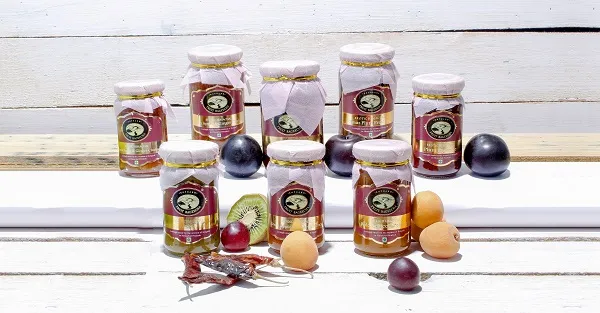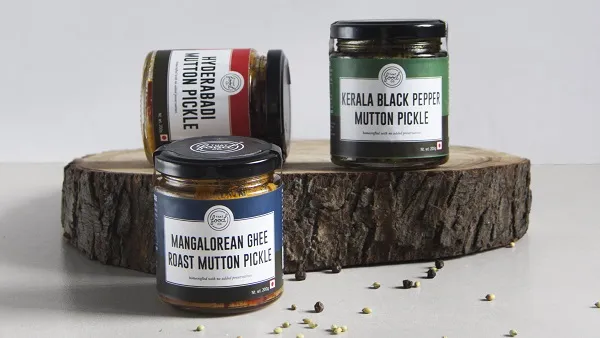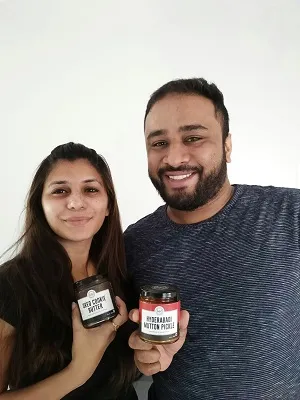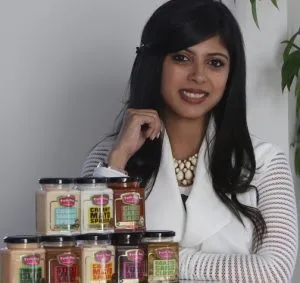Do e-tailers like Amazon and BigBasket solve the problem of distribution for young food brands?
One of the biggest roadblocks young food entrepreneurs run into is the offline distribution barrier. Making their way through the vast network of modern trade stores and kirana shops isn’t easy. But online retail is not the solution. Yet.
Aditi Mammen Gupta was very excited when a modern trade chain, which shall remain unnamed, gave her shelf space in its prominent Bengaluru store for her gourmet sauces and spreads brand Posh Nosh. She paid the steep listing fees and paid more for special displays. So it came as a shock when an employee of the firm visited the store a few days later and found the shelves bereft of any Posh Nosh jars.
The store had not even put the bottles out on the shelves. I did not have a sales team then and had shipped the jars to the store. When I asked for an explanation I was told that sales staff of bigger brands came to the store every day and ensured prominent display for their brands. It was like this was completely my responsibility—ensuring my products were on the shelf that we paid for,” says Aditi, 32, who had this experience last year and now has a sales team of three.
Aditi’s experience with this Bengaluru outlet encapsulates the problems faced by entrepreneurs trying to distribute newly launched food brands through the network of thousands of modern trade stores and the lakhs of kirana shops in the country.
So when online sites, ranging from generalists like Amazon, specialists like BigBasket and off-beat ones like Qtrove and Place of Origin, entered the fray, many food entrepreneurs thought that the food gods had finally answered their prayers for easy distribution. But reality is far more complicated as YourStory found out when we spoke to a handful of foodpreneurs across the country.
Also read: Taste of nostalgia: online startups cash in on the close links between food and identity
The offline distribution barrier
The retail industry is infamous for being difficult for new entrants, especially from a distribution perspective. Most modern trade outlets require brands to pay listing fees, which can range from a few thousand rupees to over a lakh depending on the number of SKUs and the number of outlets that the brand wants to be present in. There are many brands out there in India in the food category, from established ones to newborns, and shelf space is limited.

FMCG companies have traditionally used a network of stockists and distributors to cater to the large network of final retailers. But, as Aditi’s experience illustrates, to ensure that the products are displayed on store shelves the company needs to have its own sales teams that go to stores almost on a daily basis. All this adds to the overheads of a brand, money that a young startup can ill-afford.
In food, there is the additional challenge of limited shelf life with life spans of days and months.
Then, top companies like HUL and Nestle have hundreds of brands, many in the same category, across multiple price points ensuring a stranglehold on consumers’ wallets. Nestle, for instance, has launched over 35 new brands since 2015. Stores are more open to stocking products from established brands as these are considered more sellable. These established players, who spend millions of dollars in advertisements a year, have captured shelf space and mind space. HUL, the single largest advertiser in India, spent Rs 1,107 crore on advertisements and sales promotions in Q3 FY 2017-18. Challengers find it difficult to match up in size. Not every brand has a Baba Ramdev as a brand ambassador to do a Patanjali to the FMCG goliaths.
Siren song of online retail
However, these are not points that many passionate entrepreneurs consider right off the bat when starting up. In fact, there has been a renaissance of sorts in the packaged food space in the country in the past few years with foodpreneurs launching unique and experimental products, many of them healthy and preservative-free. Now consumers can get innovative products like chocolate fudge sauce in a jar, butter made from nuts like almonds and peanuts, bacon and balsamic-flavoured butter, and apple and Naga king chilli chutney.

Many entrepreneurs launching food brands today have no real experience in retail. But they do know that the market is large. Food and grocery is the biggest segment in the $672 billion retail industry. By 2020, this segment is expected to account for 66 percent of the revenues of the $1.1 trillion retail industry. But they also know that regular brick-and-mortar distribution can be a nightmare.
That is where online sites have come in, with their siren song promising access to a national market at a lower cost and with minimum hassles of logistics. Online sites charge no listing fees, only commissions that range typically between 15 percent and 20 percent.

Take Nehal Karkera for example. He is a professional chef, who trained under a Michelin-starred chef in US and has experience working at the Taj Group of Hotels and the Walt Disney Cruise Line. Nehal and his then girlfriend and now wife, Gia Karkera, started putting up food stalls at events like Comic Con Mumbai and saw people gobbling up his creations. The initial plan was to start a food delivery model, but the duo realised that would be too complex for them to handle and that scale would be limited to Mumbai, at least for some time.
At an event in Taj, Nehal saw great response for packaged food and that’s how the idea for That Food Company (TFC) came about. The Mumbai-based company sells flavoured butters and regional pickles.
“We thought of only online for distribution as that was more accessible,” says Nehal, 31, who started the FMCG line in late 2016.
Online has fewer barriers compared with offline distribution with small brands able to sell directly, manage inventory on their own, and work with the site’s category managers on offers and deals. The company sells through curated specialist marketplaces Qtrove, Place of Origin, and Scootsy. TFC is getting the testing that is necessary done before becoming a food brand on Amazon.
Nehal started thinking about going offline when he reached an order volume of 15 a day. “Offline, I realised, is very expensive. We are still experimenting with our products and tastes, and I can’t do that if cost of distribution is very high as I can’t then afford to fail with one of my experiments,” says Nehal.
Websites are very open to trying out new products. They want us to do new things as that attracts customers. We launch at least one new product every quarter,” says Nehal, whose company boasts of products like bacon and balsamic-flavoured butter, Oreo cookie butter, and Hyderabadi Mutton Pickle.
The company sees sales of up to Rs 2.8 lakh a month. Nehal is looking at raising funding to expand production and get into physical retail.

This cost of physical retail is what put off the husband-wife duo behind Himachal Pradesh-based preserves and chutney brand Fruit Bageecha. Anuradha Kanwar Budhraja and Kartik Budhraja were media professionals in Singapore for 10 years and moved to Himachal’s apple district, Kotgarh, in 2012 to start a fruit processing venture. They started selling their speciality preserves and chutneys, with flavours like apple and Naga king chilli chutney, Christmas plum preserve, and Kiwi preserve with star anise, to hotels nearby.
But when they tried the offline route they realised that margins for the distributor, and retailer and logistics costs were accounting for around 80 percent of MRP. This, they realised, would not be sustainable.
Online costs are working out to around 48 percent of MRP. That’s much better. We also get to work directly with the online sites,” says Anuradha, 41.
In the first year of operations, the company saw sales of 2,000 bottles. Anuradha and Kartik are on target to close this fiscal with sales of around 40,000 bottles.
The Butternut Co, run by yet another couple Ankita Kukreja and Sahil Kukreja, retails flavoured butters made from nuts like almond, peanut, and cashew. Ankita, a nutritionist, and Sahil, a former Ranji and Kings XI Punjab cricketer, launched online and offline distribution simultaneously. Offline was first through stores in Mumbai where they could distribute directly. It was when they started going beyond Mumbai that they started trying to get distributers for each city they wanted to enter.
“Finding the right distributor, getting the recommendations has been a challenge. Then managing the transport to the distributors in different cities is another challenge as there typically is back and forth. In the case of online, logistics is much more streamlined with our products in their warehouse or us shipping directly,” says Ankita, 29, who holds an MSc in Human Nutrition from Australia’s Deakin University. Online accounts for 60 percent of the company’s sales.
Offline still king
Many entrepreneurs have realised that being offline is still important despite India increasingly becoming digital. Online retail is still only about three percent of the overall retail industry. Just the modern trade industry was $60 billion in size in 2015 and is expected to be a $180 billion industry in two years.
Vinamra Pandiya, Co-founder of curated marketplace Qtrove, admits as much. “Online is still small. For the foreseeable future brands cannot ditch the offline channel,” Vinamra says. Qtrove sells a wide selection of speciality food brands. Food and bath and beauty account for 70 percent of sales on Qtrove, with the split between the two categories almost even.
Pinakiranjan Mishra, Partner and National Leader at advisory firm EY and an expert on Indian retail sector, has this to say:
For a new brand especially, offline is necessary to gain trust. Building brand credibility especially for a new company without touch and feel would be difficult. Online is good to get some footprint but offline is needed for scale. An established player, on the other hand, can distribute a new product just online as they can leverage their existing credibility and perhaps even brand.”
There are examples of brands being built through the online channel, like mobile brand Xiaomi. It built up its initial user base completely online and has become the number one mobile brand in India after it expanded offline. But even when it entered India it was already a known brand in China and early adopters already knew of the company.
Online has other limitations too. Nehal highlights the oft-repeated challenge of too many products online. “It is difficult for discovery. Our products sometimes get lost online,” Nehal says. Here again, being a lesser known brand doesn’t help.

In Aditi’s case, her glass jars turned out to be a challenge online. Since the jars are heavy they attract a delivery charge of around Rs 90 per bottle. This is a fee that the company cannot absorb at this stage. Adding a Rs 90 delivery fee makes the Rs 150 product a difficult sell. That’s why Aditi has now gone back to the drawing board to create lighter jars.
It is because of these reasons that Rohan Mirchandani, Co-founder and CEO of Drums Food International that manufacturers the Epigamia brand of Greek yogurt, decided to focus on offline. Yet, there were hiccups. “When we first launched Epigamia, we relied on third-party distributors, an approach that ultimately failed due to certain realities of our product. Namely, its 15-day shelf life and the fact that it’s extremely heat-sensitive,” says Rohan, who launched the Epigamia brand in 2015 and now sells three million cups of the yogurt every month across India.
So the company started directly distributing and has its own cold chain fleet to supply the cups from factory to store. Drums raised around $14 million in Series B funding last year.
Rohan says offline offers some additional advantages. “One of the key drivers of growth for any new packaged food brand is sampling and impulse purchase in stores. This is not something ecommerce can offer currently,” says Rohan, 35, adding that only about 10 percent of Epigamia’s sales happen online.
So can brands afford to not be online? The answer is a resounding no.
Consumers today are looking at younger brands that offer a healthier and fresher alternative. They also prefer a model where the brand is directly reaching out to them. Brands need to build online as that is the direct-to-consumer channel. That’s the future,” Vinamra says.
But until the future is here, foodpreneurs will have to go down the more difficult offline path.







